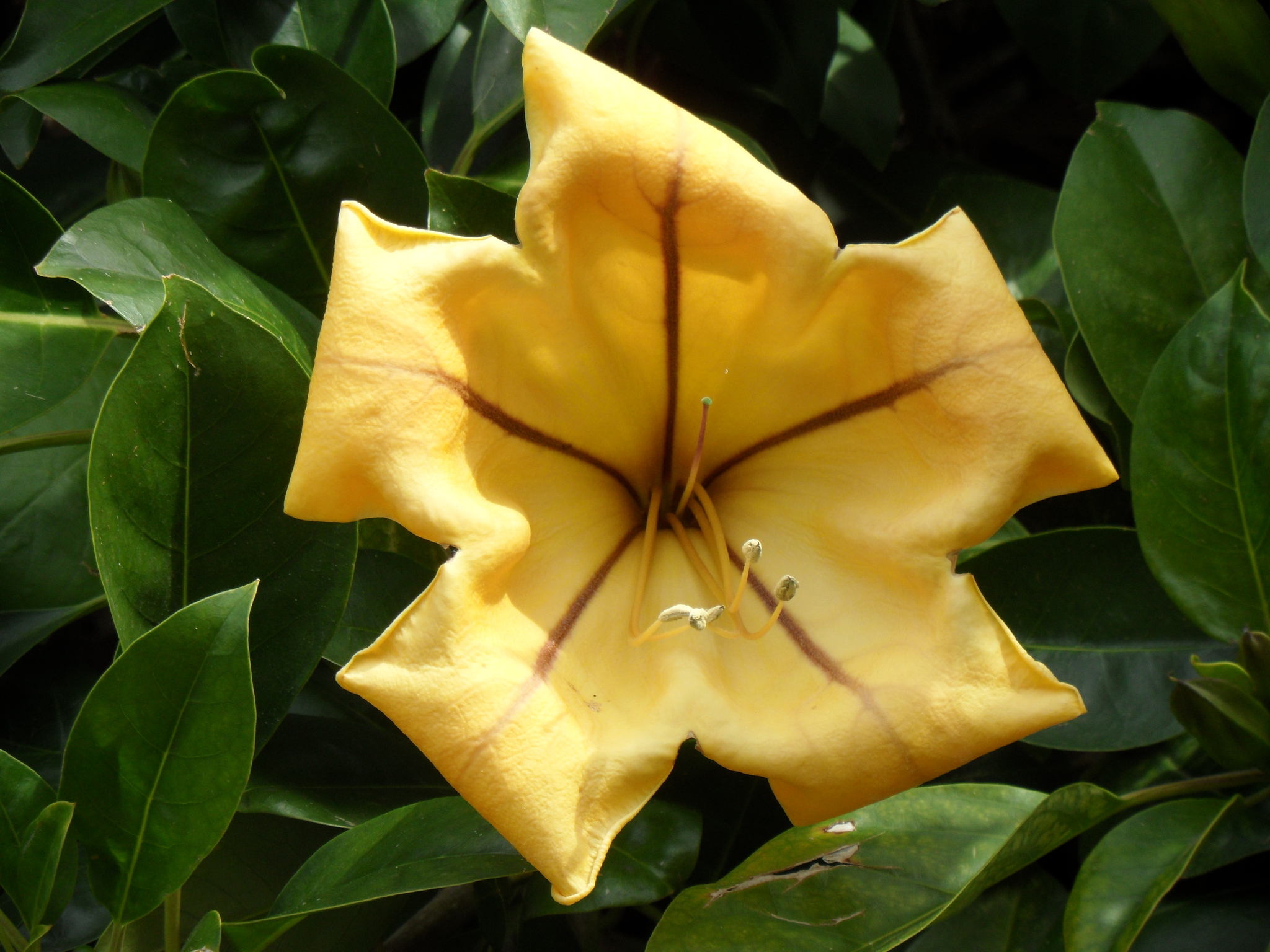
Commemorating Swedish botanist Daniel Carl Solander (1733–82), who worked in England from 1760, travelling to Australia on Cook’s first voyage to the Pacific (1768–71).
Woody climbers or scrambling shrubs. Bark fissured. Leaves alternate, simple, entire, mostly leathery and shiny. Flowers axillary, solitary, fragrant at night. Calyx tubular, to 10 cm long, irregular, with 5 lobes at the tip. Corolla to about 40 cm long, funnel- or cup-shaped, 5-lobed, white, yellow or purplish. Stamens 5, attached inside the corolla tube, sometimes protruding. Ovary of 2 carpels, 4-chambered. Fruit a 2-chambered, leathery berry with numerous seeds
Seed and softwood cuttings.
Used in Mexico as a source of hallucinogenic chemicals.
Vines with large trumpet flowers, mostly yellow and smelling of coconut.
10 species from tropical America, with a centre of distribution in Mexico.
De Wolf (1955a), Bernardello & Hunziker (1987).
Source: (2002). Solanaceae. In: . Horticultural Flora of South-eastern Australia. Volume 4. Flowering plants. Dicotyledons. Part 3. The identification of garden and cultivated plants. University of New South Wales Press.
